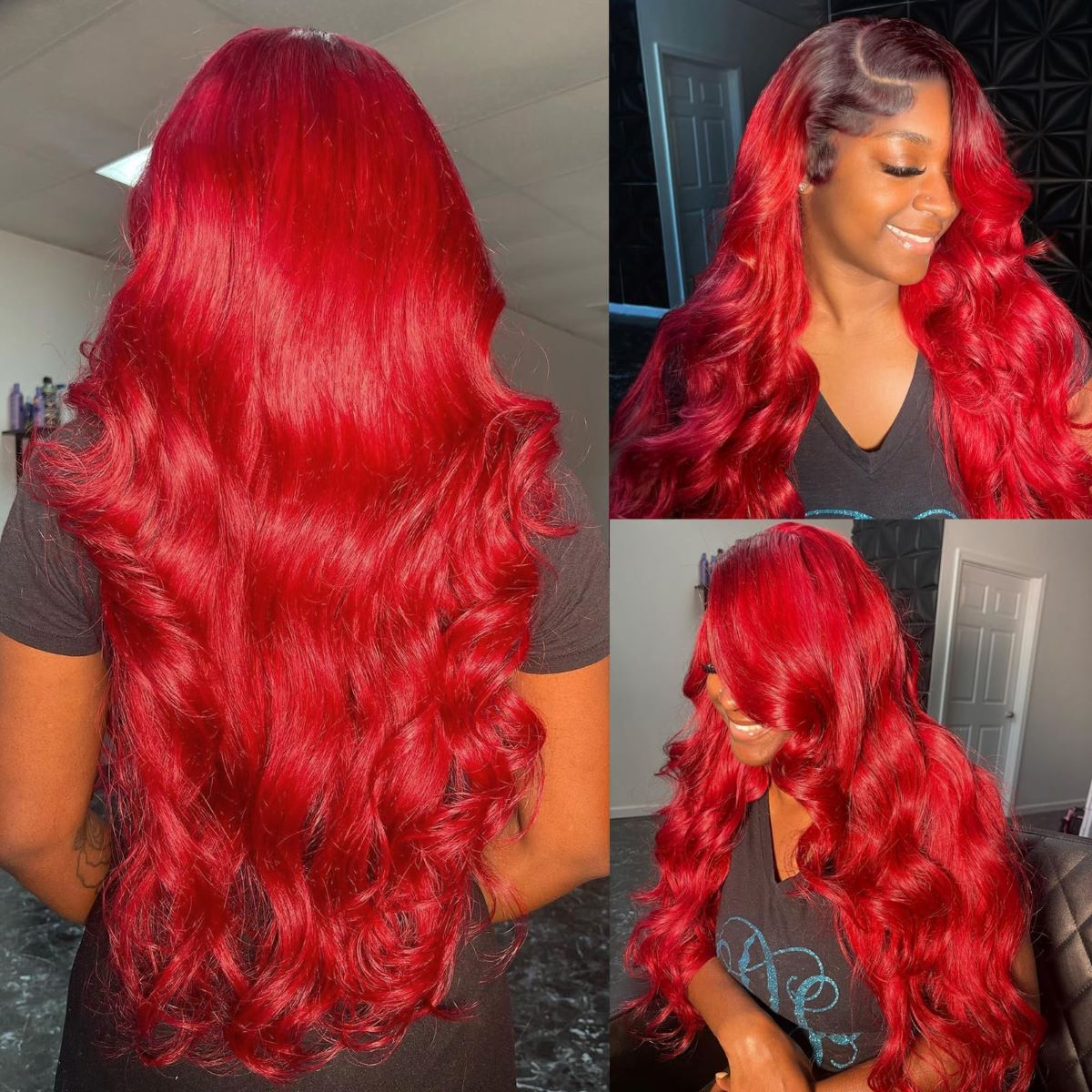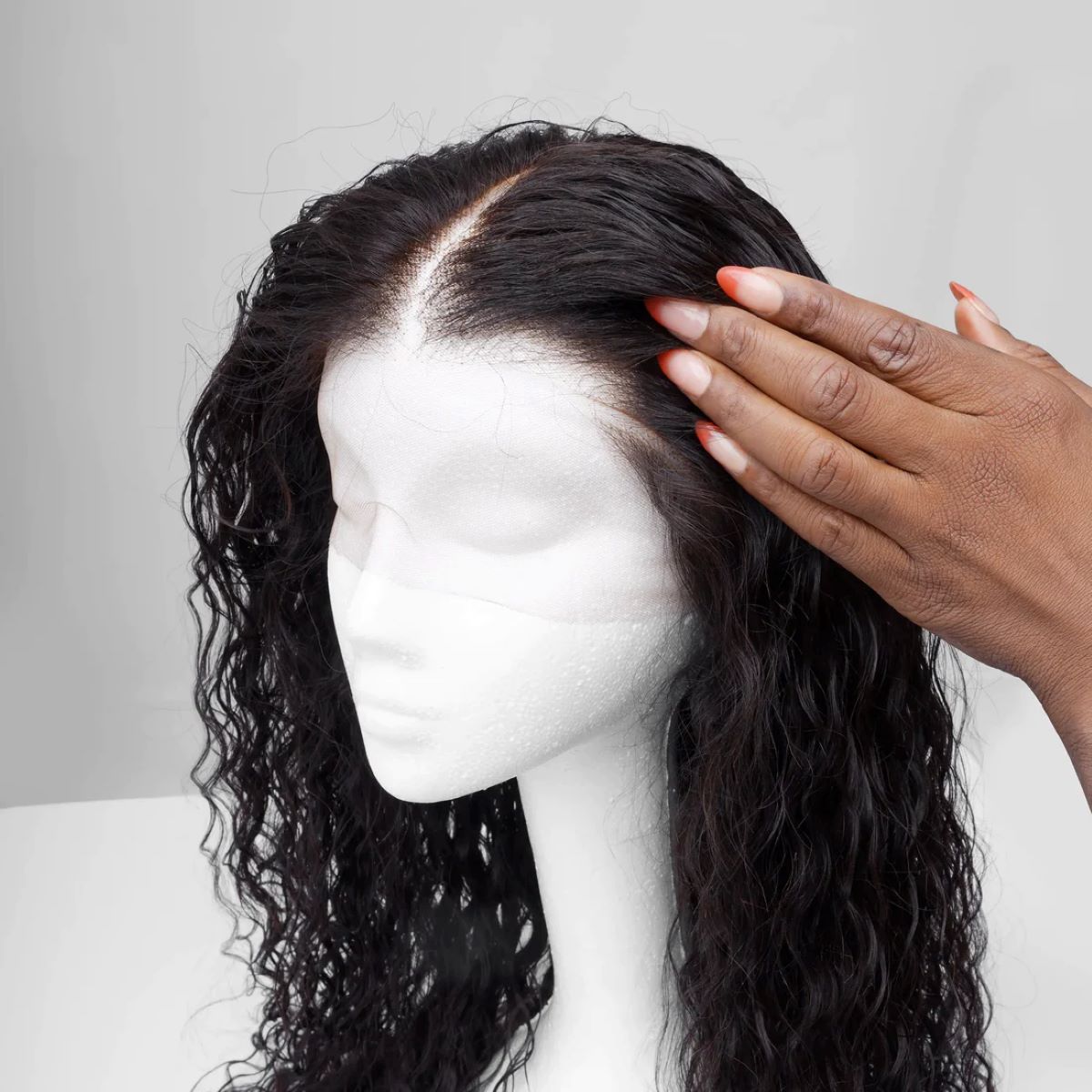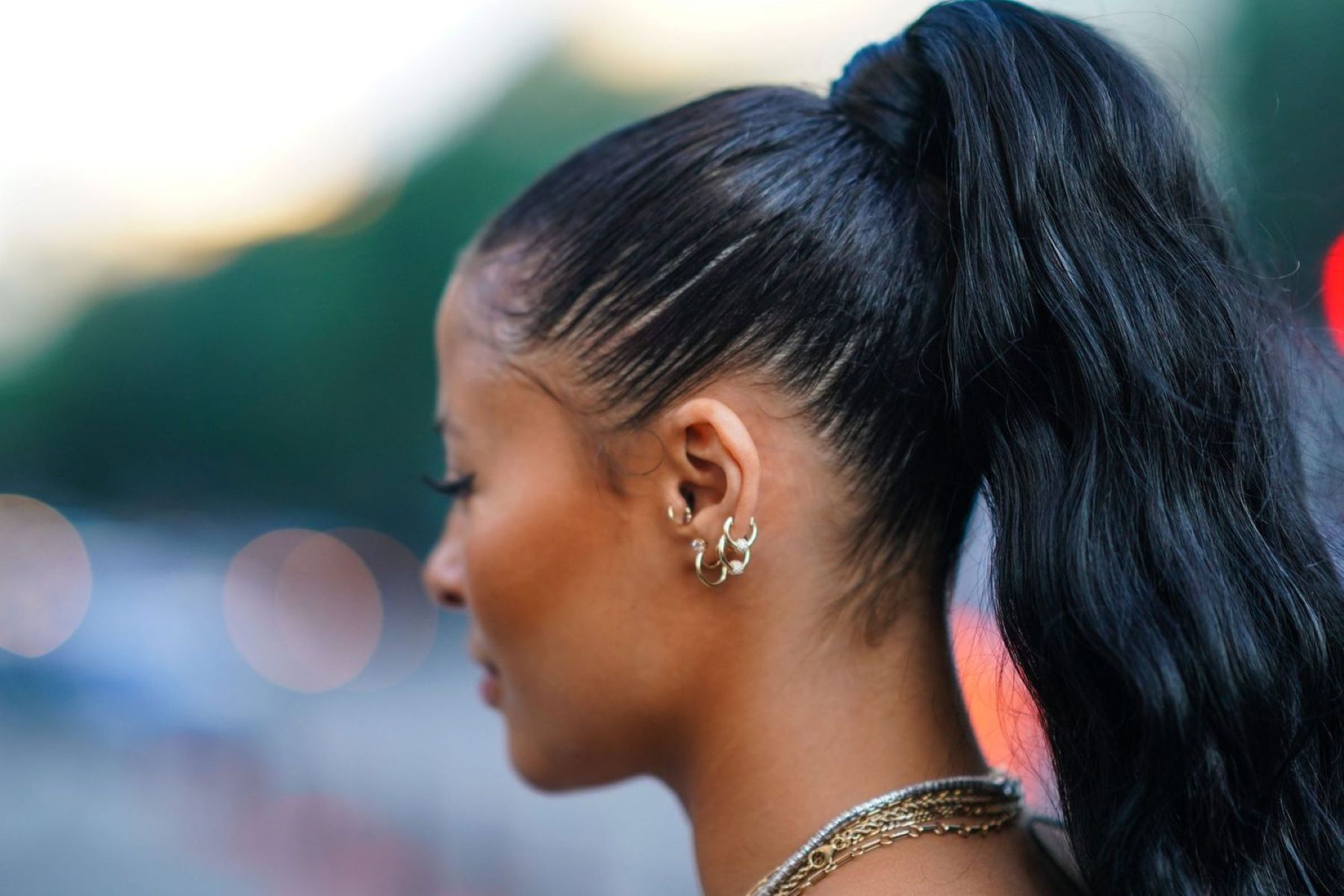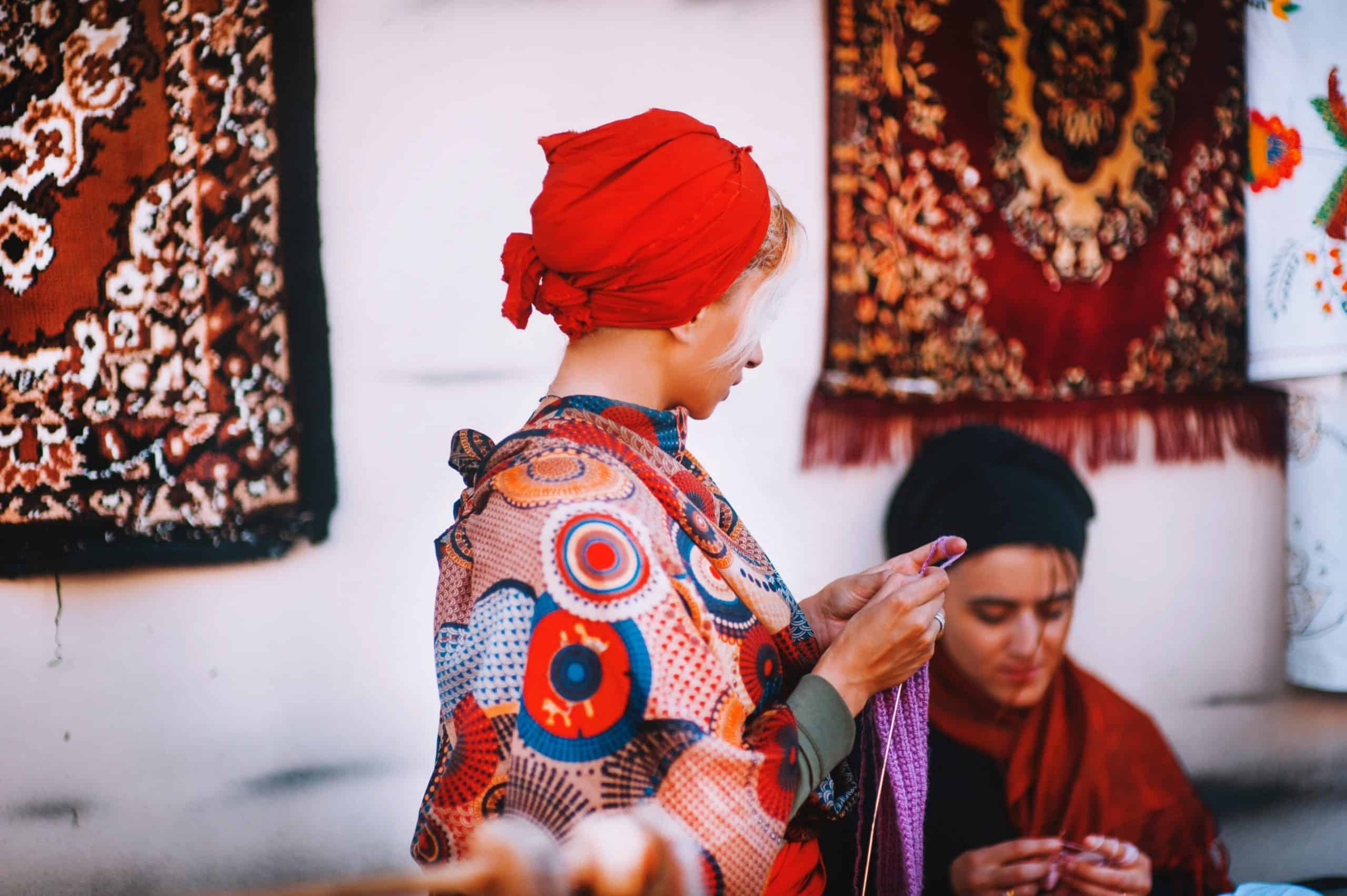

Lifestyle
How To Wash A Wig
Published: March 5, 2024
Learn the best techniques for washing a wig to keep it looking fresh and stylish. Discover the lifestyle tips for maintaining your wig's quality and appearance.
(Many of the links in this article redirect to a specific reviewed product. Your purchase of these products through affiliate links helps to generate commission for Regretless.com, at no extra cost. Learn more)
Table of Contents
Introduction
Wigs are a versatile and popular accessory that can instantly transform your look. Whether you wear a wig for fashion, convenience, or medical reasons, it's essential to keep it clean and well-maintained. Regular washing not only ensures that your wig remains hygienic but also helps to preserve its quality and longevity.
Properly washing a wig may seem daunting at first, but with the right guidance and a gentle touch, you can easily master this essential skill. By following a few simple steps, you can keep your wig looking fresh, vibrant, and ready to wear at a moment's notice.
In the following sections, we will delve into the step-by-step process of washing a wig, from detangling to styling. Whether you're a seasoned wig enthusiast or a newcomer to the world of wigs, this comprehensive guide will equip you with the knowledge and confidence to maintain your wig with care and precision.
So, let's embark on this journey to discover the art of washing and caring for your wig, ensuring that it remains a cherished and reliable accessory for many occasions to come.
Read more: How To Wash Rothy’s
Step 1: Detangle the Wig
Before embarking on the washing process, it's crucial to ensure that the wig is free of knots and tangles. This initial step sets the foundation for a thorough and effective cleaning process. Here's how to expertly detangle your wig:
-
Gentle Brushing: Begin by gently brushing the wig with a wide-tooth comb or a specialized wig brush. Start from the ends and gradually work your way up to the roots. This approach prevents excessive pulling and minimizes the risk of damaging the wig fibers.
-
Divide and Conquer: For longer wigs, consider dividing the hair into sections to facilitate the detangling process. Secure the sections with hair clips or ties to prevent them from intertwining while you work on other areas.
-
Patience is Key: Approach the task with patience and a gentle touch. If you encounter stubborn knots, resist the urge to pull forcefully. Instead, delicately work through the tangles with your fingers or the comb, gradually loosening the hair without causing breakage.
-
Use a Detangling Spray: For particularly stubborn knots, consider using a specialized detangling spray designed for wigs. Apply the spray to the tangled areas and allow it to work its magic for a few minutes before gently combing through the hair.
-
Check for Residual Styling Products: If the wig has residual styling products such as hairspray or gel, these can contribute to tangling. Prior to washing, it's advisable to remove any product buildup by gently combing through the hair and using a mild wig shampoo if necessary.
By meticulously detangling the wig, you pave the way for a seamless and effective washing process. This preparatory step not only ensures that the cleaning solution can reach all parts of the wig but also minimizes the risk of further tangling during the washing and drying stages. With the wig now free of knots and tangles, you are ready to proceed to the next step of preparing the washing solution.
Step 2: Prepare the Washing Solution
The process of washing a wig involves more than just water and shampoo. To ensure a thorough yet gentle cleansing, it's essential to prepare a specialized washing solution tailored to the needs of synthetic or human hair wigs. By following these steps, you can create a gentle and effective washing solution that will cleanse the wig without compromising its integrity.
For Synthetic Wigs:
-
Gather the Essentials: Begin by assembling the necessary supplies, including a wig shampoo specifically formulated for synthetic fibers. Avoid using regular household shampoos, as they may contain harsh chemicals that can damage the wig.
-
Dilute the Shampoo: Fill a basin or sink with cold water and add a small amount of the wig shampoo. Gently swirl the water to create a diluted solution, ensuring that the shampoo is evenly distributed.
-
Mind the Temperature: When preparing the washing solution for synthetic wigs, it's crucial to use cold water. Hot water can cause synthetic fibers to frizz or lose their shape, so maintaining a cool temperature is key to preserving the wig's appearance.
For Human Hair Wigs:
-
Select the Right Products: For human hair wigs, opt for a mild and nourishing shampoo designed for delicate hair. Additionally, consider using a conditioner specifically formulated for human hair wigs to maintain softness and manageability.
-
Balancing Act: Fill a basin or sink with lukewarm water and add a small amount of the chosen shampoo. Gently mix the water to create a balanced solution that will effectively cleanse the wig without stripping its natural oils.
-
Conditioning Considerations: If the human hair wig requires conditioning, prepare a separate solution by diluting the conditioner in lukewarm water. This conditioning step is vital for restoring moisture and enhancing the wig's luster.
General Tips for Both Synthetic and Human Hair Wigs:
-
Avoid Overloading with Product: Whether preparing the washing solution for synthetic or human hair wigs, it's important to use a minimal amount of shampoo to prevent residue buildup. Excessive product can be challenging to rinse out thoroughly, potentially leaving the wig feeling heavy or stiff.
-
Gentle Mixing: When diluting the shampoo or conditioner in water, use a gentle stirring motion to avoid creating excessive suds. Aggressive mixing can lead to tangling and may make it difficult to rinse the wig effectively.
By customizing the washing solution to suit the specific requirements of the wig, you can ensure a gentle yet thorough cleansing process. With the washing solution prepared, you are now ready to proceed to the next step of washing the wig, maintaining a meticulous approach to caring for this cherished accessory.
Step 3: Wash the Wig
Washing a wig is a pivotal step in maintaining its luster and cleanliness. This process not only removes dirt, oil, and product buildup but also revitalizes the wig's appearance, ensuring that it remains fresh and vibrant. Whether you're dealing with a synthetic or human hair wig, the washing process requires a delicate touch and attention to detail. Here's a comprehensive guide on how to expertly wash your wig, tailored to the specific needs of synthetic and human hair varieties.
For Synthetic Wigs:
-
Gentle Submersion: Carefully place the wig into the prepared basin or sink containing the diluted shampoo solution. Gently press the wig into the water, allowing the soapy solution to permeate the fibers.
-
Soak and Swirl: Let the wig soak in the shampoo solution for a few minutes, allowing the gentle cleansing action to take effect. To ensure even coverage, gently swirl the wig in the water without agitating or rubbing the fibers.
-
Rinse with Care: After the soaking period, lift the wig from the water and carefully drain the soapy solution. Refill the basin or sink with clean, cold water and submerge the wig once more, gently swishing it to rinse away the shampoo residue.
-
Handle with Caution: When rinsing the wig, avoid excessive wringing or squeezing, as this can distort the fibers and lead to tangling. Instead, support the wig with your hands as you gently press out the water.
For Human Hair Wigs:
-
Mindful Immersion: Submerge the human hair wig in the lukewarm shampoo solution, ensuring that the entire wig is saturated. Lightly agitate the water to encourage the shampoo to cleanse the hair without causing friction.
-
Nourishing Soak: Allow the wig to soak in the shampoo solution, enabling the gentle cleansing properties to work their magic. During this time, you can softly massage the shampoo through the hair, focusing on areas that may have accumulated residue.
-
Thorough Rinsing: Lift the wig from the soapy water and gently squeeze out the excess shampoo. Subsequently, immerse the wig in a basin of lukewarm water, swishing it to ensure complete rinsing and the removal of any remaining product.
-
Conditioning Care: If the human hair wig requires conditioning, follow the shampooing process with a gentle immersion in the diluted conditioner solution. Allow the conditioner to infuse the hair with moisture before proceeding to the rinsing stage.
By meticulously following these tailored washing techniques, you can effectively cleanse your wig without compromising its integrity. With the wig now refreshed and free of impurities, the next step involves carefully rinsing and conditioning the wig to maintain its softness and manageability.
Step 4: Rinse the Wig
Rinsing the wig is a crucial step that follows the cleansing process, ensuring that all traces of shampoo or conditioner are thoroughly removed. This step is essential for maintaining the wig's cleanliness, softness, and overall integrity. Whether you're dealing with a synthetic or human hair wig, the rinsing process requires a gentle and meticulous approach to achieve optimal results.
For Synthetic Wigs:
-
Cold Water Rinse: After the wig has been cleansed with the shampoo solution, it's time to initiate the rinsing process. Fill the basin or sink with clean, cold water, and carefully submerge the wig. Gently swish the wig in the water, allowing the cold water to penetrate the fibers and rinse away the residual shampoo.
-
Thorough Drainage: Lift the wig from the water and allow the excess water to drain naturally. Avoid wringing or squeezing the wig, as this can lead to tangling and potential damage to the delicate synthetic fibers. Instead, support the wig with your hands as you gently press out the water, ensuring a thorough yet gentle drainage process.
-
Repeat if Necessary: If you notice any lingering traces of shampoo, consider repeating the rinsing process with fresh cold water. This additional step helps to guarantee that the wig is free of any residual cleansing product, promoting a clean and revitalized appearance.
For Human Hair Wigs:
-
Lukewarm Water Rinse: Following the shampooing and, if applicable, conditioning process, prepare a basin of clean lukewarm water for the rinsing stage. Submerge the wig in the water and gently swish it to ensure that the shampoo or conditioner is effectively rinsed from the hair.
-
Gentle Squeezing: Once the wig has been thoroughly rinsed, carefully lift it from the water and gently squeeze out the excess water. Exercise caution to avoid excessive wringing, as this can compromise the natural texture and structure of the human hair fibers.
-
Conditioner Removal: If the human hair wig has been conditioned, ensure that the diluted conditioner is completely rinsed from the hair. This step is vital for maintaining the wig's softness and preventing any residual product from weighing down the strands.
By meticulously adhering to these tailored rinsing techniques, you can effectively cleanse the wig without leaving behind any traces of cleansing or conditioning products. With the rinsing process complete, the next step involves gently conditioning the wig to restore its softness and enhance its manageability.
Step 5: Condition the Wig
Conditioning is a vital step in the wig care routine, especially for human hair wigs. This process helps to restore moisture, enhance softness, and maintain the overall manageability of the wig. By infusing the hair fibers with nourishing ingredients, a quality conditioner can revitalize the wig, leaving it feeling luxuriously smooth and looking impeccably healthy. Here's a detailed guide on how to expertly condition your wig, tailored to the specific needs of human hair varieties.
For Human Hair Wigs:
-
Selecting the Right Conditioner: Choose a high-quality, wig-specific conditioner designed for human hair. Opt for a product that is free from harsh chemicals and enriched with nourishing ingredients to promote optimal hair health.
-
Diluting the Conditioner: Dilute the conditioner in lukewarm water to create a gentle conditioning solution. This diluted mixture ensures even distribution and prevents the application of concentrated conditioner, which may weigh down the hair.
-
Submerging the Wig: Carefully place the human hair wig into the basin or sink containing the diluted conditioner solution. Gently press the wig into the water, allowing the conditioning solution to envelop the hair fibers.
-
Soaking for Nourishment: Allow the wig to soak in the conditioner solution, enabling the nourishing properties to penetrate the hair. During this time, you can softly massage the conditioner through the strands, focusing on areas that may require extra hydration.
-
Rinsing with Care: Lift the wig from the conditioning solution and gently squeeze out the excess conditioner. Subsequently, immerse the wig in a basin of clean lukewarm water, swishing it to ensure complete rinsing and the removal of any remaining conditioner.
-
Gentle Squeezing: Once the wig has been thoroughly rinsed, carefully lift it from the water and gently squeeze out the excess water. Exercise caution to avoid excessive wringing, as this can compromise the natural texture and structure of the human hair fibers.
By meticulously following these tailored conditioning techniques, you can effectively nourish and revitalize your human hair wig, ensuring that it remains luxuriously soft and beautifully manageable. With the conditioning process complete, the next step involves carefully drying the wig to maintain its shape and quality.
This comprehensive approach to wig care ensures that your beloved accessory remains in optimal condition, ready to complement your style with its renewed luster and allure.
Step 6: Dry the Wig
Properly drying a wig is a crucial step in the maintenance process, as it directly impacts the wig's shape, texture, and overall condition. Whether you're dealing with a synthetic or human hair wig, the drying process requires a gentle and methodical approach to ensure that the wig retains its natural appearance and remains in optimal condition.
For Synthetic Wigs:
-
Gentle Patting: After rinsing the wig, place it on a clean, absorbent towel. Gently pat the wig with another towel to remove excess water. Avoid rubbing or wringing the wig, as this can cause damage to the delicate synthetic fibers.
-
Air Drying: Once excess water has been removed, allow the wig to air dry on a wig stand or a similarly shaped object to maintain its form. Position the wig away from direct sunlight and heat sources to prevent potential damage or color fading.
-
Avoid Heat Styling: It's crucial to refrain from using heated styling tools or hair dryers on synthetic wigs, as high temperatures can cause irreparable damage to the fibers. Opt for natural air drying to preserve the wig's integrity and longevity.
For Human Hair Wigs:
-
Gentle Squeezing: Following the conditioning and rinsing process, gently squeeze out excess water from the wig. Use a clean, absorbent towel to blot the wig, removing additional moisture without causing friction or tangling.
-
Air Drying with Care: Place the human hair wig on a wig stand or a similarly shaped object to air dry. Position the wig away from direct sunlight and heat sources, allowing it to dry naturally while maintaining its shape and texture.
-
Avoid Excessive Manipulation: Refrain from brushing or styling the human hair wig while it's wet, as the hair is more susceptible to damage in its damp state. Allow the wig to dry completely before engaging in any styling or grooming activities.
By meticulously adhering to these tailored drying techniques, you can effectively preserve the integrity and appearance of your wig, ensuring that it remains in optimal condition for future wear. With the wig now thoroughly dried, the next step involves styling the wig to achieve your desired look, completing the comprehensive process of caring for this cherished accessory.
Step 7: Style the Wig
Styling a wig is the final touch that brings your desired look to life, whether it's a sleek and polished appearance or a casual, tousled vibe. This step allows you to personalize the wig to suit your unique preferences, ensuring that it complements your style and exudes confidence. Regardless of whether you're working with a synthetic or human hair wig, the styling process requires a delicate touch and a creative approach to achieve the desired outcome.
For Synthetic Wigs:
-
Finger Styling: Synthetic wigs are designed to maintain their shape, making them relatively low-maintenance when it comes to styling. Use your fingers to gently tousle the hair and create natural-looking texture. Avoid using heated styling tools, as synthetic fibers are not heat-resistant and can be irreparably damaged by high temperatures.
-
Accessorize: Enhance the wig with headbands, scarves, or hair clips to add flair and personality to your look. Experiment with different accessories to achieve various styles, from elegant updos to casual, carefree looks.
-
Light Spritz: If the wig needs a touch-up, consider using a specialized wig styling spray to lightly mist the hair and refine the desired look. Be mindful of using minimal product to avoid buildup, ensuring that the wig maintains its natural appearance and feel.
For Human Hair Wigs:
-
Gentle Brushing: Use a wig brush or wide-tooth comb to gently detangle the human hair wig. Start from the ends and work your way up to the roots, ensuring that the hair remains smooth and free of knots.
-
Heat Styling: Human hair wigs offer versatility when it comes to styling, as they can withstand heat from styling tools. Use a low to medium heat setting on curling irons or straighteners to achieve your desired hairstyle. Remember to apply a heat protectant product to shield the hair from potential damage.
-
Customization: Human hair wigs can be customized to suit your preferences, including trimming the hair to achieve a specific length or adding layers for dimension. If you're unsure about making alterations, consult a professional wig stylist for expert guidance.
By meticulously following these tailored styling techniques, you can elevate the wig to reflect your individual style and personality. Whether you opt for a chic, polished look or a relaxed, effortless vibe, the art of styling the wig allows you to express yourself with confidence and flair. With the wig now perfectly styled, it's ready to adorn you with its renewed allure and charm, completing the comprehensive process of caring for this cherished accessory.











